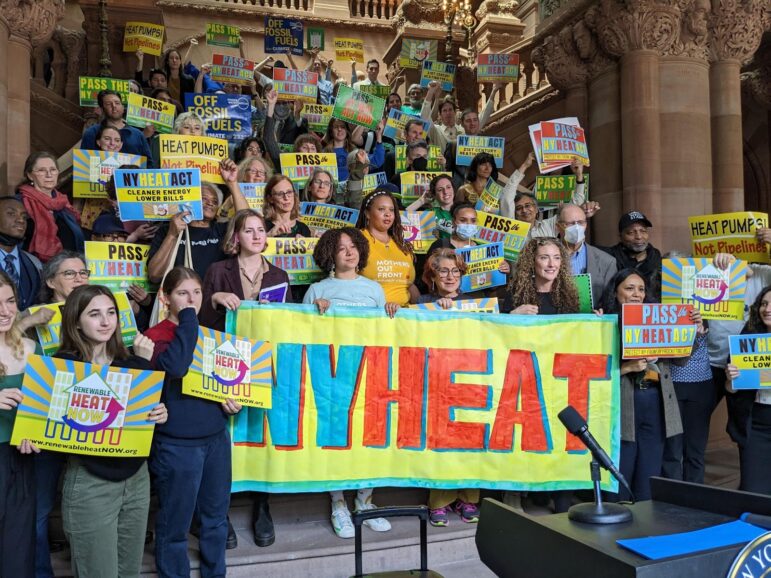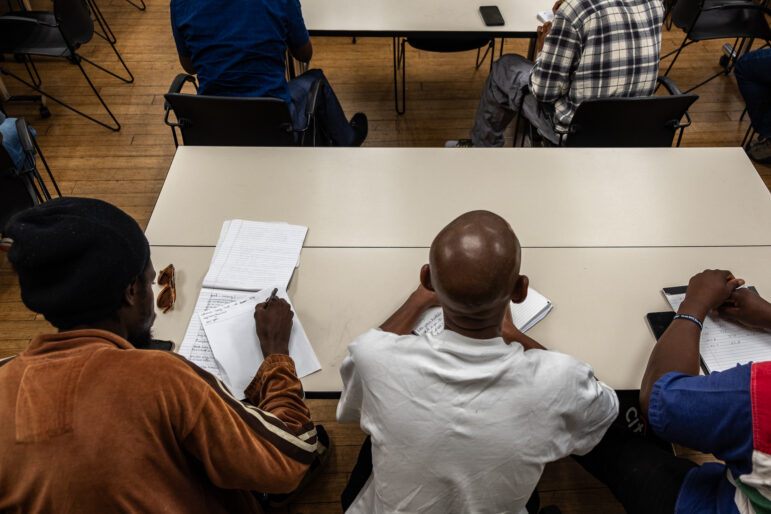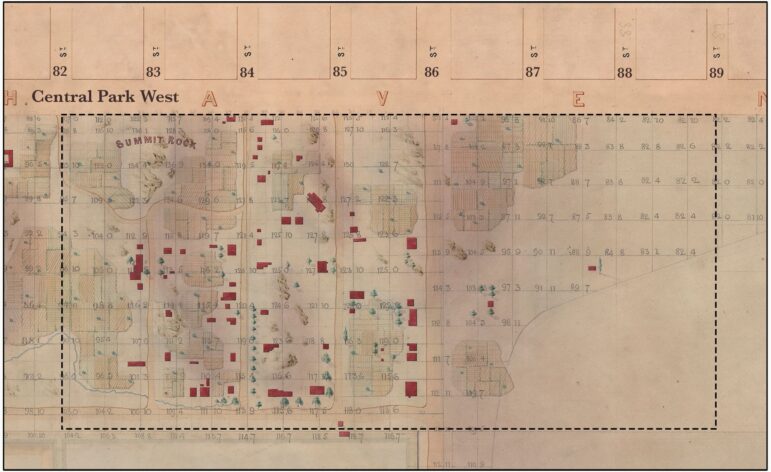Although the new monitor credits NYCHA for being a “very different organization” since the start of the oversight arrangement in 2019, there are still setbacks, particularly with addressing mold, leaks and lead.

Adi Talwar
Water damage in a bathroom at NYCHA’s Red Hook West Houses in 2022.Though the start of the school year is still a day away for the city’s scholars, the New York City Housing Authority received a progress report showing mixed reviews of its maintenance and operations efforts over the past five years.
The monitor review, which comes out quarterly, is part of a legal agreement struck in 2019 with NYCHA, federal and state agencies in an effort to hold the housing authority accountable for how it manages its properties.
The arrangement put an independent entity in place to track NYCHA’s efforts to improve living conditions for tenants. On Aug. 21, Jenner and Block LLP, a law firm, published its inaugural report as the new federal monitor—filling the shoes of the former monitor, Bart Schwartz, who departed in February.
Although the new monitor credits NYCHA for being a “very different organization” since the start of the monitorship five years ago, there are still setbacks, particularly with addressing mold, leaks and lead. The housing authority is either not compliant with federal regulations or behind schedule for full remediation of these issues.
For example, NYCHA must abate 100 percent of reported floods or any other water-related damage within 24 hours, according to the report. But during the fifth year of the monitorship—defined as Feb. 1, 2023 to Jan. 31, 2024— NYCHA abated these issues within the required one-day period 69 percent of the time.
Mold cases had an even lower performance rate. The report says that NYCHA must remove or remediate visible mold within five business days, 95 percent of the time. It could also remediate the mold and the “root cause” of it within one week, and take 15 days for complex repairs, according to the rules. However, the housing authority only met those timelines 12 percent of the time.
These findings come as no surprise to Aixa Torres, a tenant association president at the Alfred E. Smith Houses in lower Manhattan and a member of NYCHA’s Citywide Council of Presidents. “I had expectations that I did not see,” said Torres. “I think some of the work got done but not as much as it could’ve.”
Anna Luft, the public housing justice project director at the New York Legal Assistance Group (NYLAG), had a similar takeaway. “I’ve heard of people reporting mold and moisture issues and being told no one can come see them for over a month to do an inspection, let alone begin the removal,” said Luft in an email to City Limits.
Slow repair times were among the reasons NYCHA was placed under federal monitorship in the first place.

Michael Appleton/Mayoral Photography Office
Former Mayor Bill de Blasio and then-HUD Secretary Benjamin Carson announcing the monitorship agreement in January 2019.In January 2019, NYCHA entered into an agreement with the U.S. Department of Housing and Urban Development (HUD), the U.S. Attorney’s Office for the Southern District of New York (SDNY), and the City of New York to ensure the housing authority is managing its properties efficiently and effectively. As the largest public housing system in the nation, NYCHA is home to 1 in 17 New Yorkers.
Luft did credit the federal monitorship for creating the Mold Ombudsman Call Center (OCC), which she says has proven to be effective for NYLAG and its clients.
The OCC is a 24-hour, third-party service that allows NYCHA residents and tenants who live under private management in the Permanent Affordability Commitment Together (PACT) program to submit complaints for mold and moisture concerns.
A tenant may call the OCC for reasons such as a maintenance worker not showing up for a scheduled appointment or incomplete repairs, according to the call center.
However, NYCHA management is still not resolving mold issues quickly enough, Luft said.
“I think in a world where NYCHA itself has significantly improved since 2019, we wouldn’t be relying on the Ombudsman as much as we do to push for and facilitate mold remediation and removal,” said Luft. “The reality is, legal advocates shouldn’t have to get involved, and neither should the OCC.”
Torres told City Limits that she has not seen much difference since the monitorship.
“At one point, I was like, ‘What was the point of all of this?’” said Torres.
Funding is a major constraint for the housing authority, and a reason it points to for falling behind on completing needed repairs. In 2017, NYCHA shared its need for $40 billion worth of capital repairs for all its buildings across the city—a number that would nearly double five years later, now sitting at just over $78 billion.
NYCHA has said that large capital repair work, such as building-wide fixes, are often out of the scope of what it can afford. The housing authority receives approximately $700 million annually from Congress, only a slice of what it needs. In recent years, it’s turned to alternative funding models in an effort to pay for repairs, such as putting developments under private management through PACT.
In a statement, a NYCHA spokesperson said the housing authority has made “transformative” changes since the monitorship went into effect, all while trying to stay afloat amid disinvestment and aging buildings.
“Since the signing of the HUD Agreement in 2019, we have worked with rigorous oversight and robust transparency to establish our Transformation Plan, leading to marked improvements in the pillar areas, fundamental changes to management structure, and the adoption of best practices across the board,” the spokesperson said.
“The monitorship has contributed to this progress, and we remain committed to this work with the Jenner & Block team as we collectively focus on improving conditions and operations for the residents we serve.”
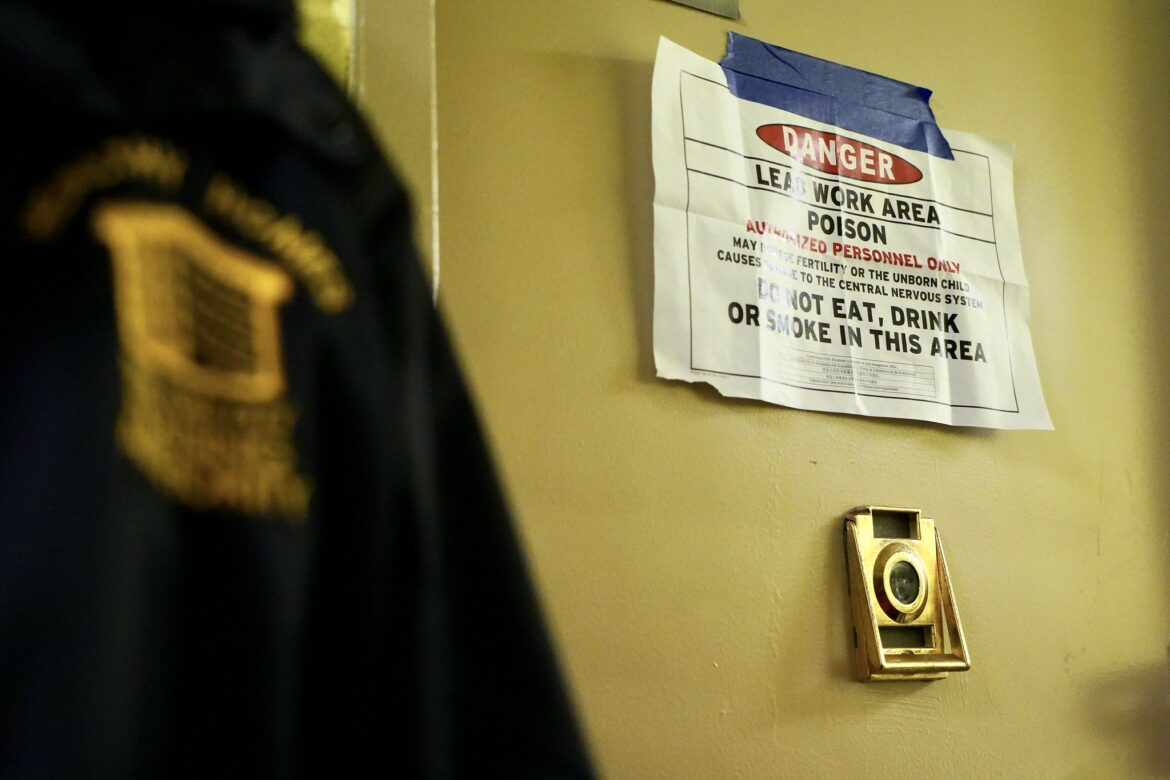
Gerardo Romo/NYC Council Media Unit
A sign warning of lead abatement work underway in a NYCHA building in 2023.Lingering lead
In 1960, the city banned the use of lead paint in residences. However, with a considerable number of NYCHA buildings built before the ban, the presence of lead paint remains an issue.
Under federal rules, NYCHA apartments suspected to contain lead paint need to be inspected annually, with results reported back to HUD, according to the city’s Department of Investigation. The DOI found that in 2013, 2014 and 2015, NYCHA filed documentation falsely claiming compliance with the mandatory inspections even though visual assessments did not take place.
The HUD agreement requires both short and long term plans to remove lead-based paint from apartments. Today, NYCHA is removing lead in 400 apartments a month, which is considered on target, according to the monitor, and “a significant improvement over only 709 abated apartments throughout 2019.”
All lead paint is expected to be removed from apartments by Jan. 31, 2039.
City Limits is looking to speak with NYCHA tenants who’ve undergone lead abatement work in their apartments, or who live in a NYCHA unit where lead paint still needs to be addressed. Contact NYCHA reporter Tatyana Turner at Tatyana@citylimits.org.
Though progress has been made, according to the monitor, the housing authority is still not compliant with remediation efforts in accordance with federally mandated time frames, and is reporting unfixed cases dating back to 2019.
“NYCHA reports that it is not meeting its obligation under the Agreement to implement hazard controls for 100 percent of lead-based paint issues it identifies during visual assessments within 90 days for apartments with children, and for 12 months for all other apartments,” the monitor report said.
The monitor also noted that the housing authority does not yet have a plan in place to abate interior common areas, which can put the authority behind meeting the target to address all such spaces by Jan. 31, 2039. How common areas are defined exactly has yet to be determined, according to the monitor.
Mold and leaks
When a NYCHA tenant has a problem with their apartment, they can submit a “ticket” or a work order so a maintenance worker can assess and solve the situation.
Between November 2019 and June 2024, there was a 74 percent decline in the number of “parent” work orders per week related to mold, the latest monitor report says. A parent work order is the initial work order for an outstanding issue; if a problem persists, the first work order or “parent work order” is closed before a new one is created.
While Jenner and Block acknowledge that NYCHA is “significantly out of compliance” with the required response times to address mold, it commends the authority for improving on preventative measures by tending to the root cause of mold growth—poor ventilation.
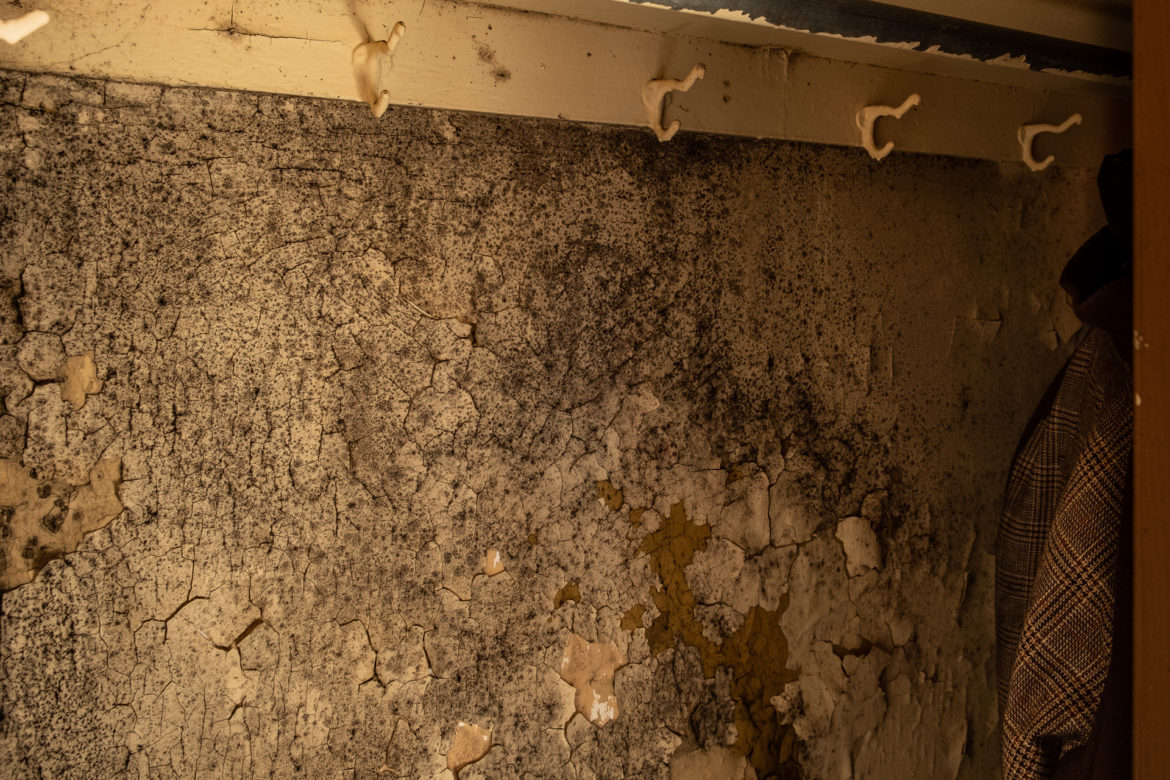
Adi Talwar
A closet with water damage and mold in an apartment at NYCHA’s Red Hook Houses in 2022.Doing so fulfills the agreement’s requirement that 85 percent of apartments or common areas avoid a secondary mold complaint within a year of a first one.
NYCHA checked more than 8,000 roof fans and replaced close to 6,200 to improve ventilation throughout its buildings, according to the report. An upgraded system to better track mold work orders is also in place, as required by the agreement.
Still, NYCHA has more than 600,000 outstanding work orders, according to Jenner and Block. Over 73,000 of those open tickets are for mold and leaks.
Luis Henriquez, the director of litigation for Legal Services NYC’s Manhattan office, told City Limits in a statement that the latest federal monitor report “makes clear” that the housing authority is failing in its duty to provide healthy homes for more than half a million residents.
“To be clear, although the HUD Agreement has been in place for the past five years, NYCHA has had the legal duty to provide healthy homes to its tenants for the past 50 years since the enactment of the Warranty of Habitability in 1975,” said Henriquez, referring to a legal doctrine which requires landlords to make sure a unit has safe and healthy living conditions.
“The time is now for NYCHA to restore dignity and respect to its residents—every day that goes by without repairs, families suffer,” he added.
Luft said that to better achieve more lasting improvements, NYCHA must address its capital repair needs.
“There are a lot of recurrent mold and moisture issues in developments where the stack pipes are so degraded that repairs are like putting a Band-Aid on Swiss cheese,” said Luft. “They can come in, they can do the removal and remediation, but then we’re actually told by NYCHA that we should let them know when the mold comes back to that unit because the problem is the entire line.”
The housing authority should also better address how developments are managed, she added.
“We should all be striving for there to be as few hoops as possible for tenants to jump through to get repairs,” said Luft. “They shouldn’t need advocates, NYCHA should be fostering a culture where repairs are done quickly and unreservedly, and that guidance needs to extend to the management office and to the law department.”
Jenner and Block expect to publish four reports annually. You can read the latest report in full here.
To reach the reporter behind this story, contact Tatyana@citylimits.org. To reach the editor, contact Jeanmarie@citylimits.org
Want to republish this story? Find City Limits’ reprint policy here.



